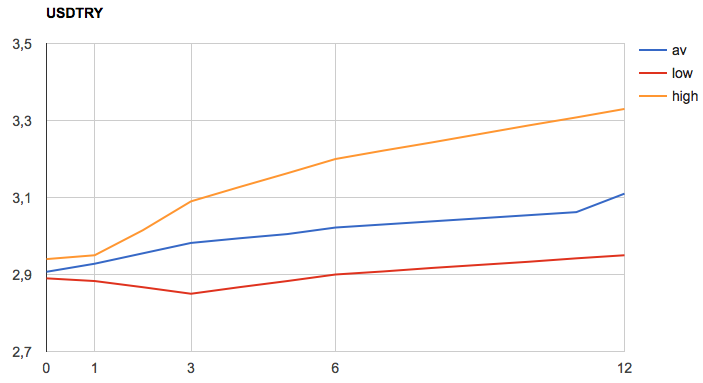Reports: Journeys to Treasury, Treasury Systems Guide and The Future of Treasury Management Systems
| 26-10-2016 | treasuryXL |
 A few interesting reports came out in the last couple of weeks: ‘Journeys to Treasury’, ‘Treasury Systems Guide 2016’ and ‘The Future of Treasury Management Systems’. We did some reading and decided we wanted to share these reports with the treasuryXL community. Let us know what you think! Did you see a report, article or something else that could be interesting for the treasuryXL community? Don’t forget to share!
A few interesting reports came out in the last couple of weeks: ‘Journeys to Treasury’, ‘Treasury Systems Guide 2016’ and ‘The Future of Treasury Management Systems’. We did some reading and decided we wanted to share these reports with the treasuryXL community. Let us know what you think! Did you see a report, article or something else that could be interesting for the treasuryXL community? Don’t forget to share!
Journeys to Treasury – BNP Paribas, EACT, PwC and SAP
In this day and age being a treasurer can be a challenge. BNP Paribas, the European Association of Corporate Treasurers (EACT), PwC and SAP have joined forces to form a thought initiative whose aim is to help finance professionals resolve some of the intricate puzzles that constitute the treasury of today and tomorrow. This resulted in the report: “Journeys to Treasury “.
Journeys to Treasury is a report that bases itself upon the understanding and knowledge of the challenges treasuries face today as well as the ability to anticipate the impact of transforming trends. In Journeys To Treasury, each of the four contributors offers their own expertise gained from their own journeys in this bumpy – yet encouraging – landscape, structured in 3 sections: Continued Innovation, Anytime, Anywhere Treasury and Cybercrime and Fraud.
Interested in reading the full report? You can download ‘Journeys to Treasury’ here.
Treasury Systems Guide 2016 – Bobsguide & GTnews
This bumper edition is full of features and commentary from industry experts, as well as our traditional functionality matrix that delves deep into what different treasury management systems are capable of.
With the recent decision to Brexit and the upcoming US election, it could mean that treasurers might have to sleep with one eye open in order to tackle potential fraud, manage cash visibility and meet regulatory requirements in these uncertain times.
We also look into what’s happening with regulation in Europe, innovation in Asia and tax in the United Kingdom which tie into some of the topics discussed by the bank and the TMS provider we interviewed.
Interested in reading the full report? You can download it here.
The Future of Treasury Management Systems – FX MM
FX-MM brings together leading industry experts to discuss the future of Treasury Management Systems (TMS) and examine how technology is enabling Treasurers to ditch the data gathering and take on a more strategic role within their organisations.
Our panel examines how technology is also helping to democratise the use of TMS, with Software-as-a- Service offerings enabling corporates large and small to enjoy the benefits of the cloud and more user-friendly systems.
Interested in reading the full report? You can download it here.
[separator type=”” size=”” icon=””]
Did you came across something interesting for the treasuryXL community? Or are you interested in becoming a author? Contact us: [email protected]


 Maarten Verheul – Treasury Consultant
Maarten Verheul – Treasury Consultant De treasurer en de controller zouden twee handen op dezelfde buik moeten zijn, maar de vraag is of dat in alle, of zelfs de meeste, gevallen wel zo is. Enkele uitzonderingen daargelaten, zijn de verschillen groter dan de overeenkomsten.
De treasurer en de controller zouden twee handen op dezelfde buik moeten zijn, maar de vraag is of dat in alle, of zelfs de meeste, gevallen wel zo is. Enkele uitzonderingen daargelaten, zijn de verschillen groter dan de overeenkomsten.



 Jan Meulendijks
Jan Meulendijks

 At the end of this year Theo van der Nat will retire. He is professor, working for the Amsterdam based Vrije Universiteit, for the (Dutch) Register Treasurer post graduate education and other organisations. If there was ever one, he is/was the guru of the Dutch treasury community. He deserves his “emeritaat” and brings me to the question: “Who is our treasury guru?”.
At the end of this year Theo van der Nat will retire. He is professor, working for the Amsterdam based Vrije Universiteit, for the (Dutch) Register Treasurer post graduate education and other organisations. If there was ever one, he is/was the guru of the Dutch treasury community. He deserves his “emeritaat” and brings me to the question: “Who is our treasury guru?”.



 The holiday season is finally here! While relaxing on the beach in Ibiza or making new memories in Bali, take some time to think about your career. Wait, what? Yes, do some thinking about your career between cocktails and sunbathing. Maybe it’s time to take your career to the next level by freshen up your knowledge or learning something new. treasuryXL has collected some of the education programs that take place in September.
The holiday season is finally here! While relaxing on the beach in Ibiza or making new memories in Bali, take some time to think about your career. Wait, what? Yes, do some thinking about your career between cocktails and sunbathing. Maybe it’s time to take your career to the next level by freshen up your knowledge or learning something new. treasuryXL has collected some of the education programs that take place in September. Stephanie Derkse – Community Manager treasuryXL
Stephanie Derkse – Community Manager treasuryXL
